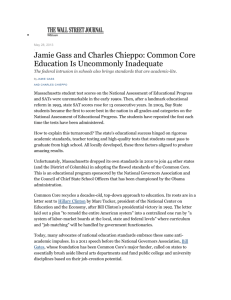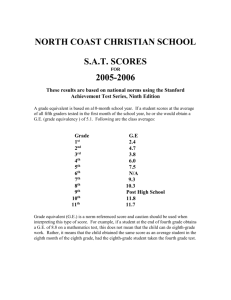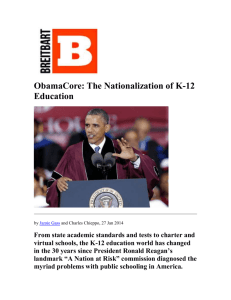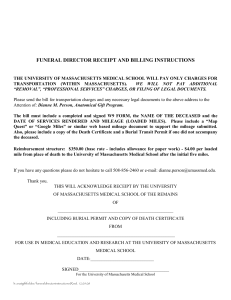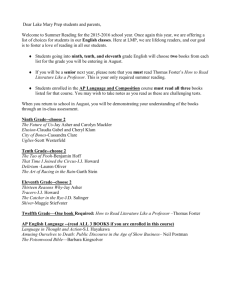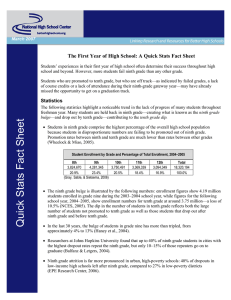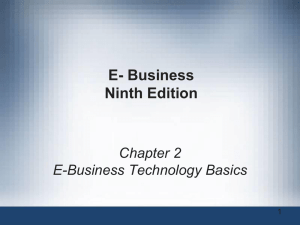The Grade Retention Fallacy
advertisement
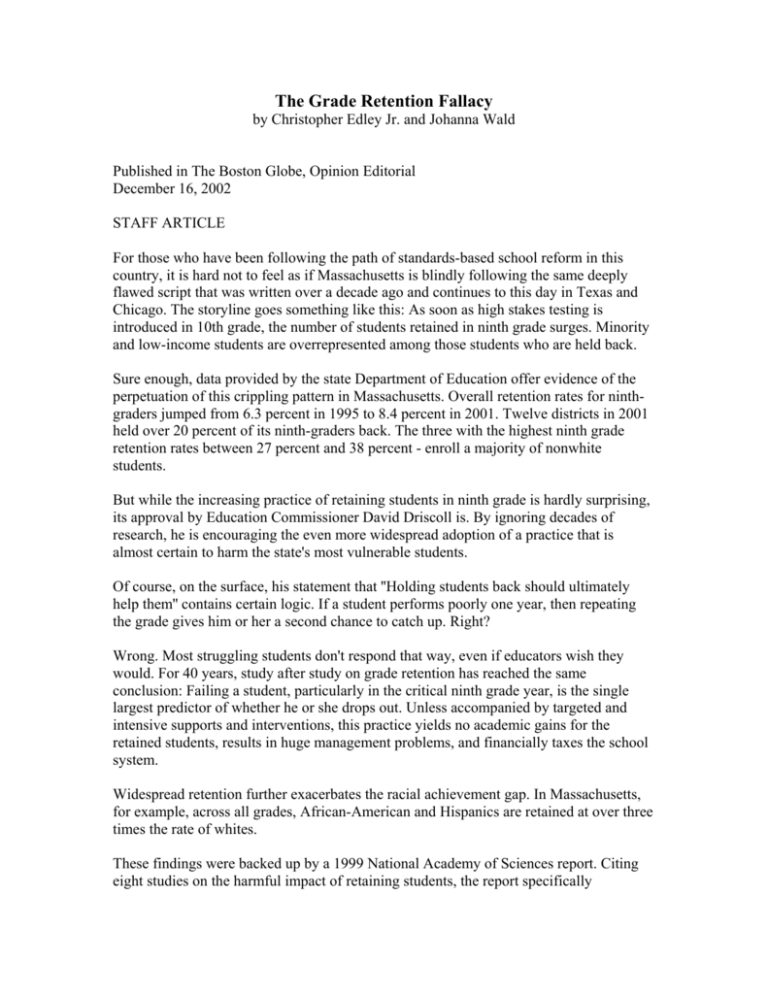
The Grade Retention Fallacy by Christopher Edley Jr. and Johanna Wald Published in The Boston Globe, Opinion Editorial December 16, 2002 STAFF ARTICLE For those who have been following the path of standards-based school reform in this country, it is hard not to feel as if Massachusetts is blindly following the same deeply flawed script that was written over a decade ago and continues to this day in Texas and Chicago. The storyline goes something like this: As soon as high stakes testing is introduced in 10th grade, the number of students retained in ninth grade surges. Minority and low-income students are overrepresented among those students who are held back. Sure enough, data provided by the state Department of Education offer evidence of the perpetuation of this crippling pattern in Massachusetts. Overall retention rates for ninthgraders jumped from 6.3 percent in 1995 to 8.4 percent in 2001. Twelve districts in 2001 held over 20 percent of its ninth-graders back. The three with the highest ninth grade retention rates between 27 percent and 38 percent - enroll a majority of nonwhite students. But while the increasing practice of retaining students in ninth grade is hardly surprising, its approval by Education Commissioner David Driscoll is. By ignoring decades of research, he is encouraging the even more widespread adoption of a practice that is almost certain to harm the state's most vulnerable students. Of course, on the surface, his statement that ''Holding students back should ultimately help them'' contains certain logic. If a student performs poorly one year, then repeating the grade gives him or her a second chance to catch up. Right? Wrong. Most struggling students don't respond that way, even if educators wish they would. For 40 years, study after study on grade retention has reached the same conclusion: Failing a student, particularly in the critical ninth grade year, is the single largest predictor of whether he or she drops out. Unless accompanied by targeted and intensive supports and interventions, this practice yields no academic gains for the retained students, results in huge management problems, and financially taxes the school system. Widespread retention further exacerbates the racial achievement gap. In Massachusetts, for example, across all grades, African-American and Hispanics are retained at over three times the rate of whites. These findings were backed up by a 1999 National Academy of Sciences report. Citing eight studies on the harmful impact of retaining students, the report specifically recommended that students not be held back on the basis of a high stakes test. In fact, the American Educational Research Association, the American Psychological Association, the National Council on Measurement in Education, the Department of Education, and most testing professionals all assert that no decision of serious consequence in a child's life should be made on the basis of a single test score. Moreover, because ninth grade marks a critical transition period when many students decide whether or not to stay in school, it may be the worst possible year for holding students back. One study commissioned by The Civil Rights Project found that, even controlling for demographic and family background characteristics, previous school performance, and pre-high school attitudes and ambitions, forcing students to repeat ninth grade contributes substantially to the likelihood that they will eventually drop out. Then why, in the face of strong evidence of its damaging impact, is the practice of retaining students in ninth grade accelerating in Massachusetts? It is difficult to skirt the most obvious answer: Superintendents and principals are under intense pressure to raise MCAS scores in their districts and schools. In many Massachusetts communities, real estate values rise and fall on the posted MCAS scores. Thus, one way to raise aggregate scores is to remove from the pool those students most likely to perform at the bottom end of the scale. But this pressure should not be allowed to trump sound policy. State educational leaders ought to take a clear-eyed view of the evidence and push for alternatives to retention, particularly as students navigate the often-treacherous path between middle and high school. What might these be? Promising strategies include early interventions, individual tutoring, intensive instruction in basic skills combined with high school level academics, better counseling and support services, and breaking up large high schools into smaller units. All of these share the same goal - identifying and reaching out to struggling students before they face the prospect of flunking a grade. Research tells us that fear and humiliation are not the strongest motivators for struggling students. Too many will simply give up on school, largely because they feel like the school system has already given up on them. If Massachusetts is to avoid creating an ever-growing underclass of high school dropouts and intensifying existing racial inequalities, its leaders need to champion strategies that will produce genuine academic gains, not simply artificially boost test scores. Christopher Edley Jr., a professor of law at Harvard Law School, is co-director of The Civil Rights Project at Harvard University. Johanna Wald is policy writer/editor at The Civil Rights Project. This story ran on page A19 of the Boston Globe on 12/16/2002. 2002 Globe Newspaper Company. http://www.civilrightsproject.harvard.edu
